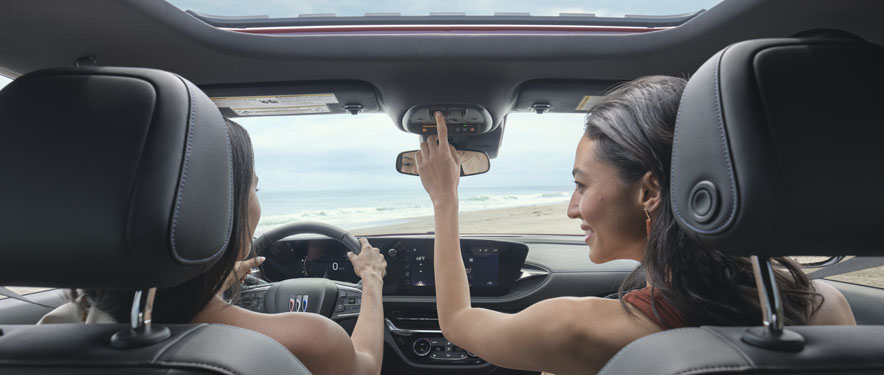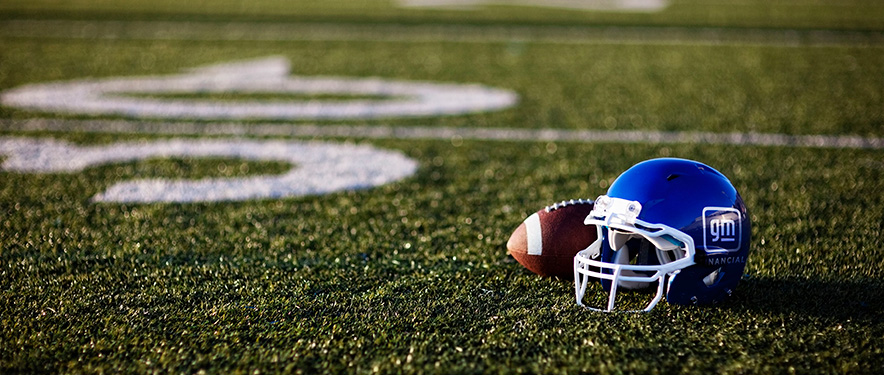- Home
- Financial Resources
- Quiz: What Kind of Driver are You?

Your Results
By Josh Foster , Peter Hitscherich and Nicole Mayer / 07/29/2022 / Your Lifestyle
If you had mostly A answers
You May Be an Aggressive Driver
The National Highway Safety Administration (NHTSA) defines aggressive driving as, “The operation of a motor vehicle in a manner that endangers or is likely to endanger persons or property.” Tailgating, speeding, running traffic lights and more can fall into this category. Typically, aggressive driving is a traffic violation while road rage is a criminal offense. You’re in your own world and expect other drivers to adjust to your wild ways, and may have even been involved in a fender bender. For you, driving is a race and a chance to finish your makeup, eat breakfast and your passengers may clench up before you even start the car. See the answers below for ways you can create safer driving habits.
If you had mostly B answers
You’re Probably a Safe Driver
Defensive driving helps you anticipate and avoid dangerous situations. You know the rules of the road and follow them accordingly. You take pride in getting from point A to B in a safe, efficient manner. While it’s natural to get distracted occasionally, it rarely happens to you because you’re so focused. You play a vital role in keeping our roads safe for everyone, including teen drivers who are still learning. The next time you hit the asphalt, don’t be afraid to puff out your chest a little and take satisfaction in doing your part.
If you had mostly C answers
You May Be a Distracted Driver
“Distracted driving is any activity that diverts attention from driving, including talking or texting on your phone, eating and drinking, talking to people in your vehicle, fiddling with the stereo, entertainment or navigation system,” says the NHTSA. For you, a fallen french fry may take your eyes off the road while you move to pick it up, or the ping of a notification may tempt you. While technology keeps us connected and hands-free driving is taking us into the future, it’s no substitute for giving your undivided attention to the road and vehicles around you. Never forget: Your driving affects everyone on the road, and vice versa. Not to mention, practicing safe driving habits could potentially help you save money on insurance.
Answer Explanations
- You’re the first car at a traffic light and it turns green. You:
Look left and right to make sure the intersection is clear before driving. Just because a light turns green doesn’t necessarily mean it’s safe to go. Always check your surroundings to ensure people or cars are not crossing.
- What do you do if you see a ball roll into the street?
Slow down. Where there’s a ball, there may be a kid and I’m ready to brake if necessary. Always be alert when driving where children play, like near playgrounds, sports fields, schools and through neighborhoods.
- What is your favorite snack to eat in the car?
This is a trick question. I rarely eat in the car. Never eating in the car is unreasonable, but it’s important to remember that eating while driving is still dangerous. It’s recommended you wait until you get to your desired location to eat or are off the road and parked.
- As you approach the crosswalk in a parking lot, you should:
Be on the lookout for pedestrians and allow them to cross. Not only is this the right thing to do, but in most regions it’s law that drivers allow pedestrians to cross the road first. So, while you may be in a rush to get to your destination, give pedestrians the right of way.
- There’s an accident on the shoulder of the road, what do you do?
Safely change lanes to give emergency vehicles more room. In many states, this is the law. No matter the extent of the accident, leave room for emergency response teams and others operating around the accident.
- How do you listen to music in the car?
I keep it at a respectable level so I’m aware of my surroundings. We all love a good jam session, but it may lead to distractions. Maintain road safety by ensuring you can hear potential emergency vehicles, railroad crossings and more.
- You’re starting to get tired on a long road trip; what should you do?
Find a safe place to stop and arrange sleeping accommodations for the night. No matter how tempting it may be to press on and continue your drive, driving while tired can diminish awareness. It’s always best to find a safe place to pull off the road and get a good night’s rest.
- Do you use your phone while driving?
I don’t use my phone when I drive; I’ll reply after I’ve arrived at my destination. According to the National Safety Council, 25% of all car accidents are caused by texting and driving. Using our phones wherever, whenever may be the norm, but cars should be considered a phone-free zone. And that goes for GPS, too. GM vehicles come equipped with OnStar, which can give you directions anywhere, hands-free.
- What do you do at a notoriously long red light?
Stay alert, but I can safely change the radio station and drink water. A long wait can be boring, but the best protocol is to always stay alert for your safety, as well as others’.
- What do you do if someone is tailgating you?
When it’s safe, change lanes or pull off the road to allow the tailgater to pass. If you’re on a multilane road and can change lanes, do so safely. If that is not an option, pull off the road until the tailgater passes you, even if that’s a parking lot. Avoid pulling over to the shoulder or into an emergency lane, which can create new hazards.
By Josh Foster, GM Financial
Josh Foster takes pride in his three orange cats and the ability to connect people with meaningful experiences. He’s a U.S. Army veteran and volunteers at the Detroit Zoo, where he’s able to educate guests with bad jokes about good animals.
By Peter Hitscherich , GM Financial
Peter Hitscherich loves dogs just about as much as he loves helping people. He also has an extreme passion for sports, so when he’s not sharing financial tips, you’ll probably find him on the field or court. Peter knows you can’t just sit on the sidelines of your financial journey, so he’ll share his playbook secrets to help you get in the game.
By Nicole Mayer , GM Financial
Nicole Mayer is a whisk-taker with a fondness for desserts. From baking to organizing, she’s motivated by trying new things and sharing her knowledge. When she’s not in the kitchen rocking out to ‘80s music, you’ll find her serving up aces on the tennis court.
View all articles

Ace Your Spring Break Road Trip
Whether you’re looking to take a day trip or embark on the adventure of a lifetime, these tips will help make your spring break road trip safe, fun and unforgettable.
PACK UP, HEAD OUT
GM Vehicles Take the Field
Take a second to imagine what position your GM vehicle might play if it was on your favorite football team.
TOUCHDOWN